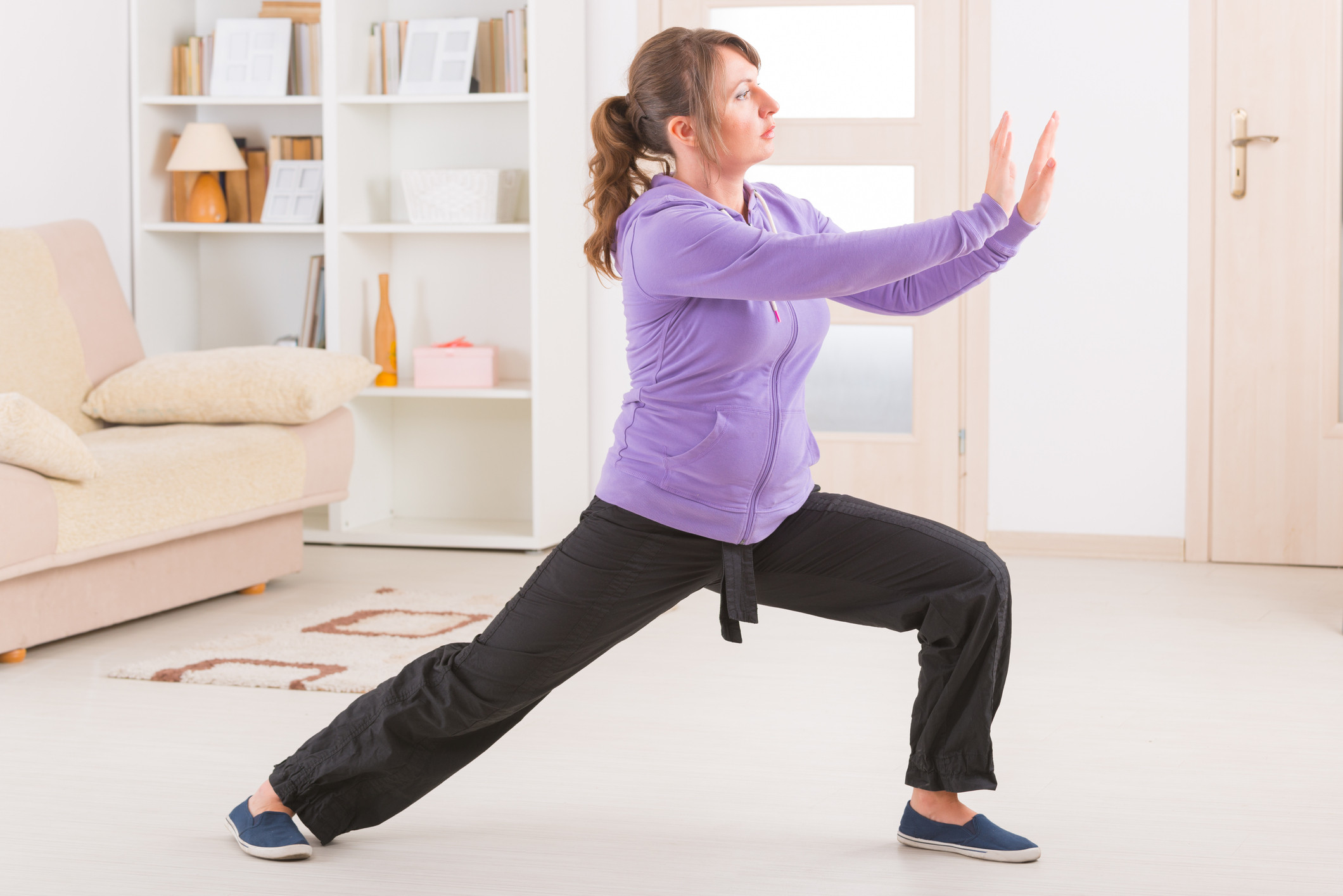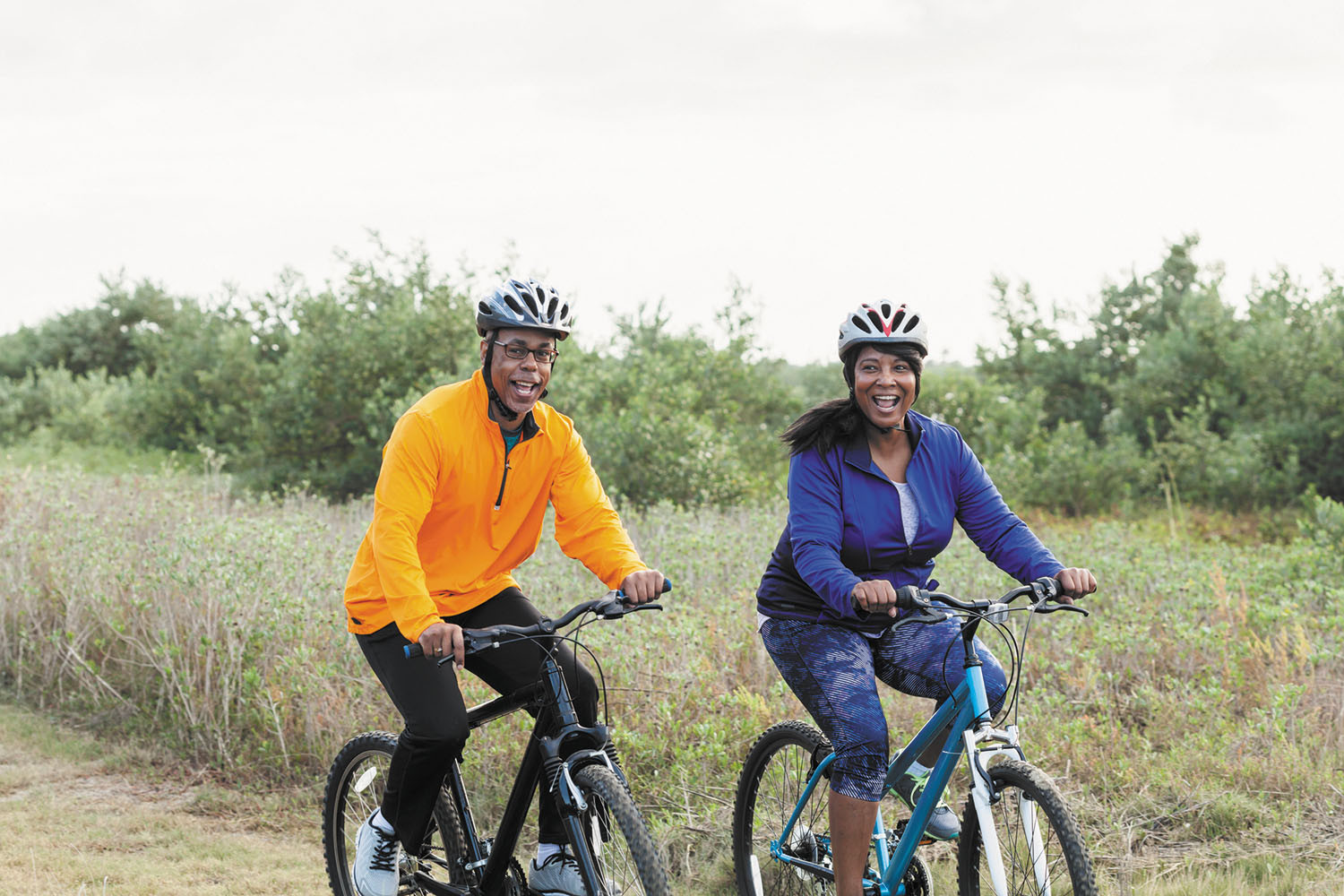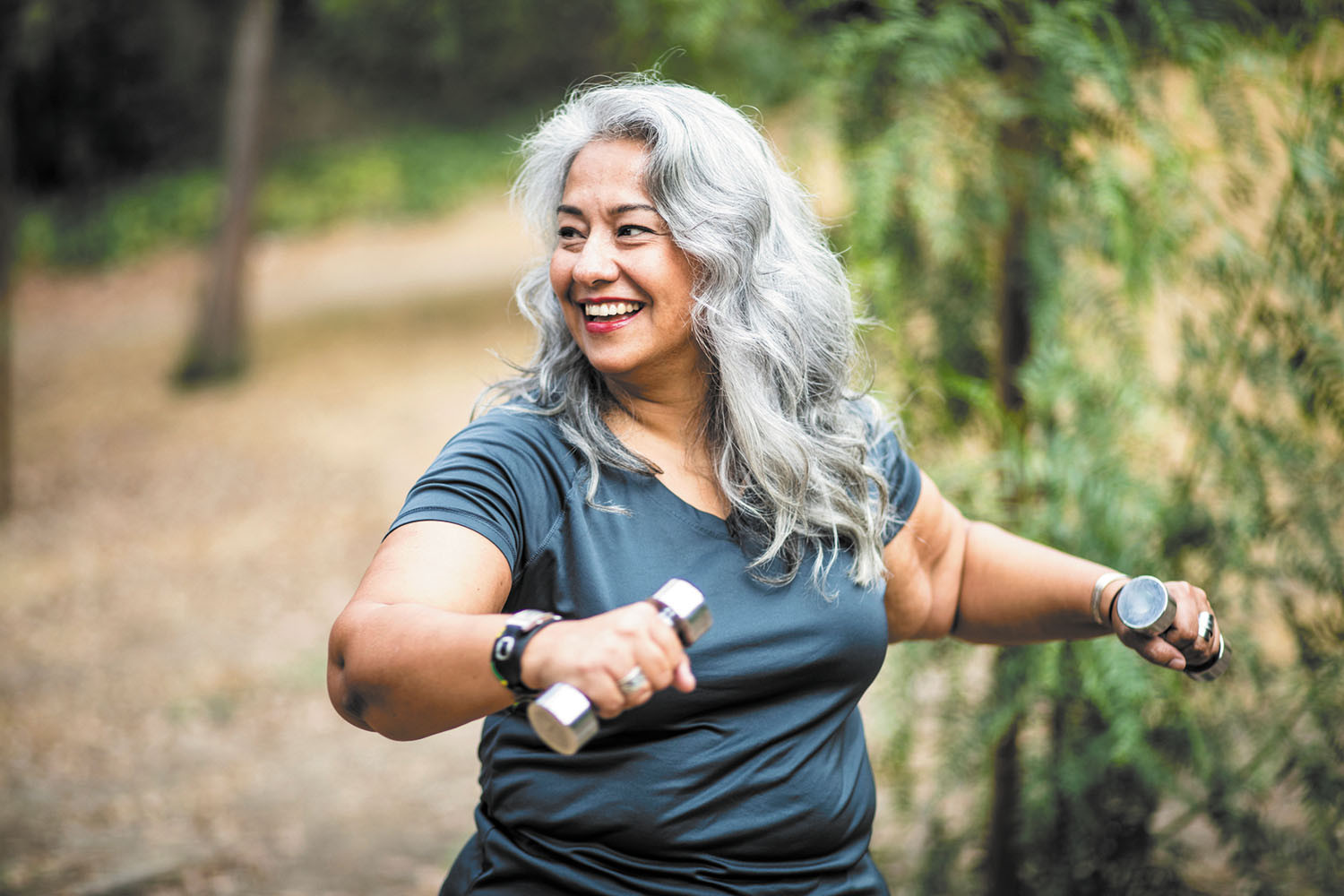
How does prostate cancer treatment affect mental health?

5 timeless habits for better health

What are the symptoms of prostate cancer?

Is your breakfast cereal healthy?

When pain signals an emergency: Symptoms you should never ignore

Does exercise give you energy?

Acupuncture for pain relief: How it works and what to expect

How to avoid jet lag: Tips for staying alert when you travel

Biofeedback therapy: How it works and how it can help relieve pain

Best vitamins and minerals for energy
Exercise & Fitness Archive
Articles
Overcoming your barriers to exercise
Find ways to be more active — even if you have sore joints or other limitations.
Image: © Cecilie_Arcurs/Getty Images
You're probably well aware that exercise is the best way to keep your heart strong and healthy. Any activity that moves your muscles will raise your heart rate, making it better able to pump blood through your body. Over time, exercise enables your heart to beat slower and keeps your blood pressure under control.
But many people don't exercise regularly. Just over half of adults in the United States meet the recommended physical activity guidelines (see "Weekly physical activity goals"). Two of the main reasons people say they don't exercise are (1) not having enough time and (2) having joint pain, fatigue, or a chronic health condition.
Treatments for breast cancer may harm the heart
But surveillance and other strategies — especially exercise — can limit the risk.
Image: © Khuong Hoang/Getty Images
Better treatments for breast cancer have contributed to the growing number of breast cancer survivors, now about three million in the United States. However, these women may face a heightened risk of heart disease from the cardiotoxic effects of chemotherapy and radiation, according to a statement from the American Heart Association in the Feb. 20, 2018, issue of Circulation.
Doctors have long known that certain cancer drugs can decrease the heart's pumping ability, especially doxorubicin (Adriamycin) and trastuzumab (Herceptin), two common treatments for breast cancer. Many women receive radiation therapy as well, which can cause heart tissue to scar or stiffen, possibly leading to valve disorders, coronary artery disease, or other heart problems. But specialists who focus on keeping the heart healthy during and after cancer treatment — known as cardio-oncologists — can offer strategies to both prevent and treat heart damage from cancer therapy.
Standing vs. sitting: Fewer pounds, less heart disease?
Research we're watching
Compared to sitting, standing burns slightly more calories — about 0.15 calories per minute. But that tiny difference adds up: a person who weighs 143 pounds could burn an extra 54 calories per day by standing instead of sitting for six hours, as researchers report in the Jan. 1, 2018, European Journal of Preventive Cardiology.
Assuming that person kept eating the same number of calories per day, that translates to 5.5 pounds of weight loss after one year. The estimate comes from data pooled from 46 different studies.
Weight loss and exercise may ease atrial fibrillation
Research we're watching
For people with atrial fibrillation, losing a little weight and getting exercise may improve their symptoms, according to a review published online Feb. 7, 2018, by The American Journal of Cardiology.
Atrial fibrillation (or afib) is a common heart rhythm disorder marked by a quivering or fluttering heartbeat, which can cause dizziness and breathlessness. Other symptoms include fatigue, weakness, and fainting.
Aerobic exercise or tai chi for fibromyalgia — which is better?
Physical activity is beneficial for people with fibromyalgia, but the pain caused by the condition makes exercise difficult for many. A new study compares the benefits of aerobic exercise and tai chi as treatments for fibromyalgia.
Don’t allow arthritis to keep you from exercising
News briefs
Image: © adamkaz/Getty Images
Exercise is considered the most effective pill-free treatment to cope with the pain and stiffness of arthritis. And more people are getting advice from their health care providers about how to stay active, according to a study published online Jan. 5, 2018, by the CDC's Morbidity and Mortality Weekly Report. Researchers looked at national health surveys gathered from 2002 to 2014. In that period, there was an increase in the proportion of people with arthritis (osteoarthritis, rheumatoid arthritis, gout, lupus, or fibromyalgia) who said their clinician suggested physical activity to help reduce symptoms — from 52% in 2002 to about 60% in 2014. But by 2014, about 40% of arthritis sufferers still said they weren't getting exercise counseling. That's significant, considering that 91 million people ages 18 or older are affected by arthritis, according to a study published online Nov. 27, 2017, by Arthritis & Rheumatology. You don't have to wait for a doctor to suggest exercise as an arthritis treatment. Try something gentle, like walking, tai chi, or modified yoga. For more ideas, check out the Harvard Special Health Report The Joint Pain Relief Workout (www.health.harvard.edu/jprw).
Pedal your way to better heart health
Riding a bike — either outdoors or inside — can be a good way to exercise at different levels of intensity.
Image: © Susan Chiang/Getty Images
Spring's milder temperatures often encourage people to exercise outside. Riding a bike can offer a nice break from walking, the exercise that doctors recommend most often. If you're bored of your walking route and looking for bit of a challenge, consider cycling. Biking enables you to travel faster and farther than jogging or running but puts far less stress on your joints.
"I have many patients who bike, and they find it's a great way to get some exercise, especially when the weather's favorable," says Dr. Brendan Everett, a cardiologist at Harvard-affiliated Brigham and Women's Hospital. Cycling may not burn as many calories as jogging over a given period of time, but jogging is difficult for many people, he notes. Also, you can choose a route that suits your fitness level — from a short, flat loop to a longer ride with gently rolling hills.
An exercise prescription for couch potatoes
Research we're watching
Image: © adamkaz/Getty Images
Decades of sedentary behavior (for example, sitting during most of your waking hours) can cause your heart muscle to shrink and stiffen. But for longtime couch potatoes, a mash-up of different types of aerobic exercise may help restore heart health, a new study suggests.
For the study, 53 healthy but sedentary middle-aged adults were divided into two groups. One (the exercise group) did high- and moderate-intensity aerobic training four or more days a week for two years. The other (the control group) engaged in regular yoga, balance training, and weight training three times a week for two years.
Want better exercise results in less time? Try interval training to boost your workout
Alternating between high- and low-intensity exercise may spur faster fitness gains.
Image: © SelectStock/Getty Images
Spend less time exercising and burn more calories: sounds too good to be true, right? But it may just be possible with interval training, a type of workout that uses short bursts of strenuous activity to ramp up your heart rate and boost your fitness.
Long popular with high-performance athletes, interval training — a workout that alternates between high-intensity and low-intensity activity — isn't just reserved for those seeking gold medals. "If done properly, it can be safe for the vast majority of people," says Dr. Meagan Wasfy, an instructor in medicine at Harvard Medical School and a cardiologist at Massachusetts General Hospital.
Do I get a better workout by running outdoors or on the treadmill?
Ask the doctors
Q. I often run on a treadmill rather than running outdoors, to avoid bad weather and save time. But am I getting a lower-quality workout?
A. Die-hard runners sometimes swear by outdoor runs, claiming that the treadmill can't come close to an outdoor workout featuring wind, hills, and uneven terrain, which they say makes outdoor runs more challenging. But that doesn't mean you can't get the same quality of workout on a treadmill indoors. If you run slower on the road and faster on the treadmill, or if you put the treadmill on an incline, you may be able to burn as many calories indoors as out. One study in the Journal of Sports Sciences found that putting the treadmill on a 1% incline could erase the differences in resistance between indoor and outdoor running. This put the two workouts on an equal footing — so to speak.

How does prostate cancer treatment affect mental health?

5 timeless habits for better health

What are the symptoms of prostate cancer?

Is your breakfast cereal healthy?

When pain signals an emergency: Symptoms you should never ignore

Does exercise give you energy?

Acupuncture for pain relief: How it works and what to expect

How to avoid jet lag: Tips for staying alert when you travel

Biofeedback therapy: How it works and how it can help relieve pain

Best vitamins and minerals for energy
Free Healthbeat Signup
Get the latest in health news delivered to your inbox!
Sign Up











